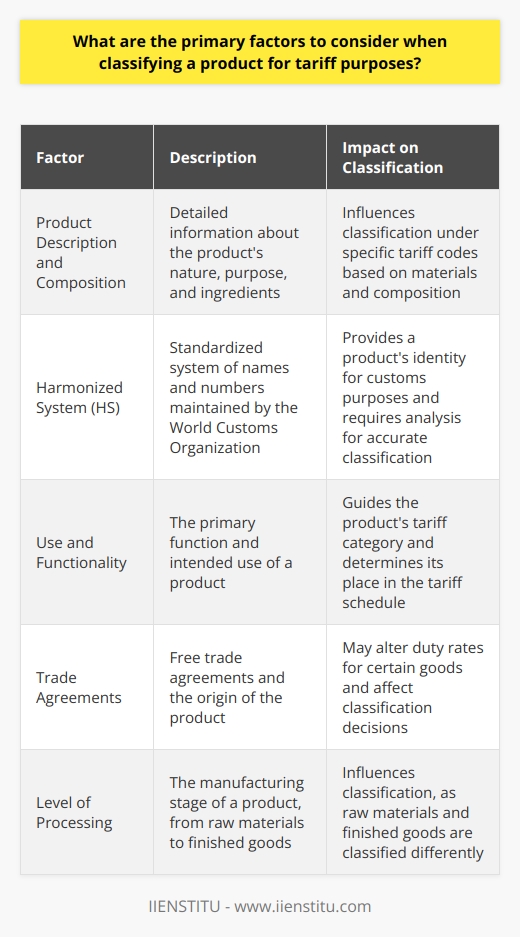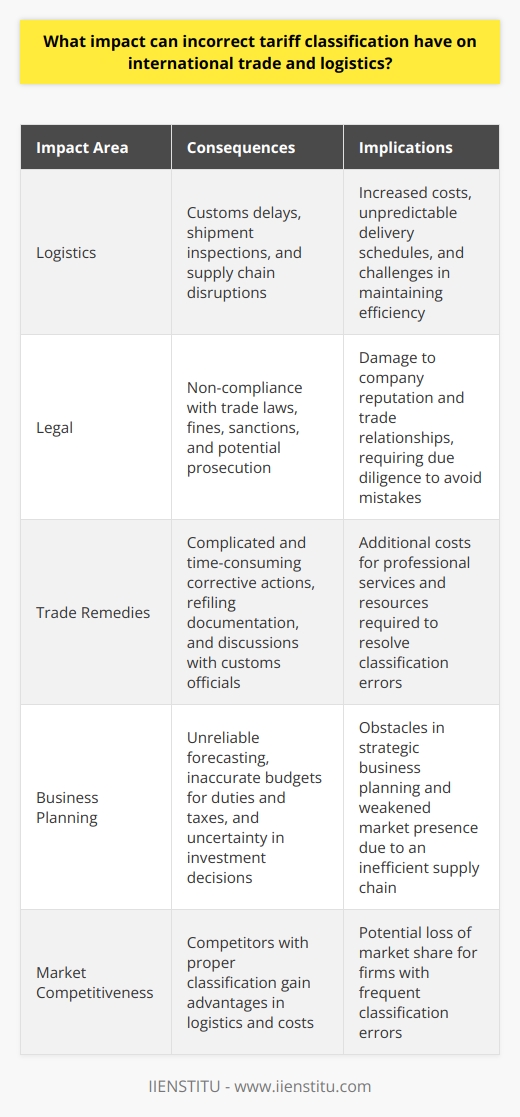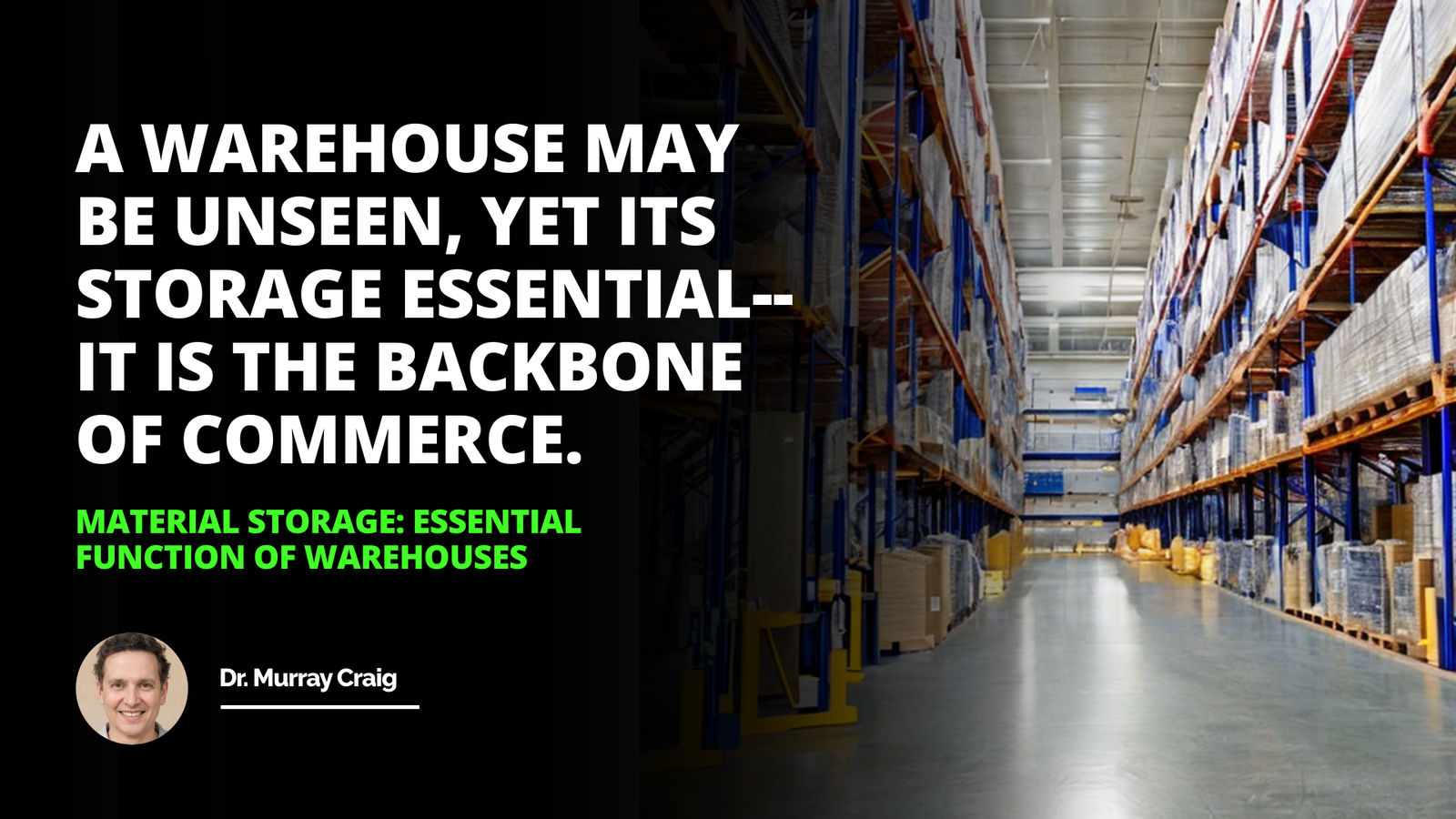
In the complex world of international trade, tariff classification stands as a cornerstone, ensuring the seamless transfer of goods across international borders. Tariff classification refers to the coding system that identifies products and assigns them a specific number, which is crucial for determining the import duties and compliance with trade regulations.
This codification—or lack thereof—holds the potential to either streamline trade processes or create significant barriers. It is this bifurcated impact that underscores the importance of tariff classification in international trade, where every transaction hinges upon the correct tariff codes to ensure legal and fiscal accuracy for all parties involved.
Fundamentals of Tariff Classification
Description of the Harmonized System (HS) Code: The Harmonized System (HS) Code is an internationally standardized system of names and numbers for classifying traded products. Developed by the World Customs Organization (WCO), the HS code's structure comprises a series of digits that break down into sections, chapters, headings, and subheadings—each level providing more specific detail about the product in question. The HS code's importance in global trade lies in its ability to aid in the clear identification of items, something that is essential for customs, statistical purposes, and determining applicable tariffs.
Discussion of The Customs Cooperation Council Nomenclature (CCCN): The Customs Cooperation Council Nomenclature, also known as CCCN, was a precursor to the creation of the HS code and served as a tool for classifying goods for customs purposes. Although it has been largely replaced by the HS code, understanding the definition and role of the CCCN provides historical context for the present classification systems. The CCCN's relationship with the HS code highlights the evolutionary path of trade classification, emphasizing the need for a unified global approach to manage the ever-growing complexity of global commerce.
Process of Tariff Classification
Key steps in Tariff Classification: Navigating the process of tariff classification involves a multistep approach where goods are first described and then analyzed to assign the correct HS code. It is detailed work, demanding a thorough understanding of the commodity being classified and its features to match it with the corresponding code. Inaccuracies during this phase can lead to significant challenges, including financial penalties and delays in shipment.
Impact of accurate Tariff Classification on import and export: Ensuring the accuracy of tariff classification is paramount for traders. The correct determination of HS codes affects the estimation of duties and taxes and guarantees compliance with trade regulations. It mitigates the risk of incurring unexpected costs, thus allowing businesses to price their goods appropriately and maintain a competitive edge in the international marketplace.
Challenges in Tariff Classification
Complexity of product-specific classifications: Within tariff classification, numerous variables contribute to the complexity of assigning the correct code. Products with multifunctional purposes, updates in technology, or novel merchandise entering the market all present particular challenges, demanding a sophisticated understanding of the system.
Evolving classification rules and policies: Trade is not a static field; it evolves with times and policies. Consequently, changes in international rules continue to reshape the landscape of tariff classification, affecting the reliability of past classifications and necessitating constant vigilance. These dynamics demand that businesses promptly respond to effects of changes to avoid disruptions in trade and minimize potential financial losses.
Tariff Classification Best Practices
Importance of constant education and knowledge updating: In response to the complexities of tariff classification, it is critical for trade professionals to emphasize constant education and knowledge updating. Through online courses and shipping and logistics courses, professionals can refine their skills, thereby enhancing their decision-making process and remaining ahead of the curve when it comes to anticipating potential changes in classifications.
Need for expert advice and consultancy: At the intersection of regulation and business, the need for expert advice and consultancy is unequivocal. Tariff Classification Experts serve a pivotal role in this ecosystem, offering the acumen required to navigate the nuances of trade classifications. Their pertinent guidance can prevent costly errors and streamline a company's operations within the labyrinthine networks of international trade.
Examples of Tariff Classification Missteps and Remedies
Case study illustrating consequences of incorrect Tariff Classification: Misclassified goods can result in severe penalties, increased costs, and shipment delays, highlighting the dire consequences of getting tariff classification wrong. Presenting real-world applications, case studies reveal these repercussions and the subsequent impact on the supply chain, providing a stark warning to all stakeholders within international trade.
Effective strategies to correct and prevent misclassification: Mitigating the risks involved in the classification process comes down to employing effective strategies. Regular audits, cross-referencing product descriptions with customs databases, and staff training are pivotal. Furthermore, developing a compliance program or engaging with partners specialized in tariff classification can prove to be invaluable.
Conclusion
Summary of Tariff Classification
Tariff classification serves as a critical navigational tool within the realm of international trade, guiding fiscal and regulatory compliance. Through understanding and applying the correct HS codes, businesses can ensure that their operations comply with the applicable laws and financial requisites, safeguarding their global trade interactions.
The future of Tariff Classification – Prediction and trends
As the world of trade continues to evolve, so too will the protocols and methodologies of tariff classification. The advent of technology, changing economic policies, and the shifting tides of international relations will all play their part in defining the future of this field. Trade professionals must brace for ongoing education and adaptation to thrive in this ever-changing landscape.
Frequently Asked Questions
What are the primary factors to consider when classifying a product for tariff purposes?
Understanding Tariff Classification
The Essence of Tariff Classification
Tariff classification serves multiple purposes. It determines the duties and taxes applicable. It also sets the legal framework for importers and exporters. A product’s classification often dictates its journey across borders.
Primary Considerations in Classification
Product Description and Composition
Every classification begins with these details. They outline the product's nature and purpose. Knowing the product's composition is crucial. It influences the classification under specific tariff codes. Materials and ingredients make a considerable difference.
The Harmonized System (HS)
The World Customs Organization maintains the HS. It provides a standardized system of names and numbers. These categorize traded products. The HS code is a product's identity for customs purposes. Analyzing the HS is necessary for accurate classification.
Use and Functionality
What a product does impacts its classification. A product's primary function guides its tariff category. This aids in determining its place in the tariff schedule.
Trade Agreements
Free trade agreements affect classification decisions. They may alter duty rates for certain goods. The origin of the product also becomes a factor.
Detailed Factors for Consideration
- Physical Characteristics
Product size, weight, and shape matter. These attributes can influence classification.
- Industry Standards
Prevalent industry practices may affect classification. They provide insight into a product’s intended use.
- Packing and Packaging
How one packs a product can affect its classification. This often relates to the product’s unit of measure.
- Level of Processing
The manufacturing stage of a product is relevant. Raw materials classify differently than finished goods.
- Technological Complexity
High-tech products may follow specialized classifications. They consider the technology used within the product.
- Intellectual Property Rights
Patented or branded goods may fall under specific provisions. They receive classifications mindful of those rights.
- Environmental Impact
Products carrying environmental implications may have special classifications. These consider a product's green credentials.
Real-World Application of these Factors
Case Studies and Rulings
Customs authorities often publish classifications for complex cases. Insights from these can aid in decision-making.
Customs Consulting
Engaging with experts can help navigate classification challenges. Industry-specific experience plays a vital role.
Ongoing Education
Staying informed on changes to the HS is essential. Laws and regulations evolve. One must update their knowledge regularly.
Final Thoughts on Classification
Tariff classification is dynamic and complex. It requires attention to detail and a deep understanding of the product and regulations. Importers and exporters must consider these factors thoroughly. Appropriate classification ensures compliance and minimizes costs.

How does the Harmonized System contribute to standardizing tariff classifications internationally?
The Harmonized System and International Trade
The Harmonized System (HS) plays a pivotal role. It standardizes tariff classifications globally. Developed by the World Customs Organization (WCO), it simplifies trade. This system emerged from a need. That need was global trade uniformity.
HS Structure and Usage
HS codes are precise. They categorize over 5,000 commodity groups. Each code is unique. It consists of six digits. These digits represent different product levels. The system aligns national tariffs. This alignment aids in international commerce.
Customs authorities rely on HS codes. They facilitate cross-border trade. Importers and exporters use these codes daily. They classify their products. Through classification, they determine duties. They also comply with regulations.
Harmonization Benefits
HS contributes to many areas:
- Global consistency becomes possible. Countries implement uniform classification. This reduces misunderstandings.
- It simplifies compliance for businesses. Here, it's about reducing errors. It's also about cost savings.
- HS enhances data comparability. This helps with economic analysis.
- It supports international trade negotiations. Parties have a common language.
- The system aids in combating illegal trade. It does so by clarifying product descriptions.
Challenges and Revisions
HS faces challenges too. Classification complexity is one. Another is ensuring worldwide adoption. These issues necessitate regular updates. The WCO revises HS every five years. Revisions consider new technology and trading patterns.
Despite challenges, HS proves indispensable. It continues to shape world trade. It does so by creating a systematic approach to classification. A more harmonized trade environment emerges. It bolsters economic growth and international cooperation.
In essence, the Harmonized System unites the world. It does so by offering a language all trading nations speak. All nations understand this language. It is the language of standardization and efficiency in global trade.

What impact can incorrect tariff classification have on international trade and logistics?
Tariff Classification Mistakes Impact International Trade
Tariff classification serves as the backbone for international trade policies. It determines the duties and taxes that importers must pay. It identifies rules and regulations for each specific type of good. Incorrect tariff classification carries substantial consequences. It directly affects logistics and trade efficiency.
Logistics Delays and Increased Costs
Incorrect classification leads to customs delays. Authorities detain shipments for inspections. They need to verify product information. This verification process takes time. Delays interrupt supply chains. Businesses struggle with disrupted delivery schedules. Predictability becomes a challenge in such scenarios.
Costs often escalate in case of misclassification. Importers face additional fees for storage and detention. These costs affect the bottom line. Moreover, wrong tariffs can lead to overpayment of duties. Conversely, underpayment can attract penalties.
Legal Ramifications
Compliance issues often accompany classification mistakes. Governments enforce trade laws strictly. Non-compliance can bring severe legal consequences. Companies risk fines, sanctions, and even prosecution. The result impacts the company's reputation as well.
Trade relationships may suffer due to errors in classification. Carelessness or ignorance does not excuse mistakes. Importers need to uphold a standard of due diligence. Failure to do so damages trust with customs authorities.
Complicated Trade Remedies
Recourse for classification mistakes is complicated. Corrective actions require time and resources. The process involves refiling documentation. It means engaging in lengthy discussions with customs officials. Such talks often necessitate legal support. Costs for professional services add up quickly.
Business Planning Challenges and Market Competitiveness
Strategic business planning faces obstacles with classification errors. Forecasting becomes unreliable. Budgets for duties and taxes lose accuracy. This uncertainty affects investment decisions.
Market competitiveness also diminishes. An inefficient supply chain weakens market presence. Competitors with proper classification gain an advantage. They enjoy smoother logistics and lower costs. Firms with frequent classification errors may lose market share.
Final Thoughts on Classification Accuracy
Tariff classification accuracy is non-negotiable for successful international trade. Inattention to correct classification can have widespread repercussions. It disrupts logistics, leads to increased costs, and introduces legal concerns. It complicates trade remedies and vexes business planning. Ultimately, it can erode a company's market position. Stakeholders must prioritize precise tariff classification. They must avoid these impacts to ensure smooth international transactions.



